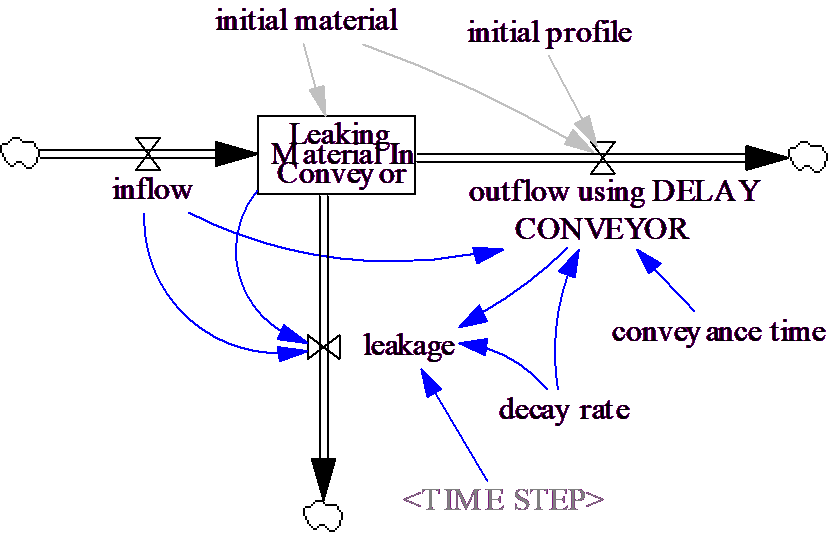If you are using conveyors without drainage then the amount of material in the conveyor is simply determined by the structure (convey2.mdl) :

Here initial causes are displayed for clarity.
If there is leakage, however, a somewhat different structure is necessary. The leakage that occurs depends not only on the material currently in the conveyor but also on material that will be coming into the conveyor. Stated differently, if you put something on the conveyor at time 0, then by time 1 it will already have done some leaking.
This more complete structure is in convey3.mdl and looks like:

And the equation for leakage is:
leakage= (Leaking Material In Conveyor +
(inflow-outflow using DELAY CONVEYOR)*TIME STEP)*
decay rate
The middle term in this equation is the one that is used to correct for the looking ahead issue. It is a relatively small error, and one that is made smaller still then TIME STEP is small. It is often most sensible to simply ignore this and use the simpler formulation:
leakage= Leaking Material In Conveyor* decay rate
This formulation will cause a small error that is not important in most settings. The error does tend to accumulate at a positive rate (because the cumulative is less than cumulative inflow when there is leakage).